
Umm Qais: Where History and Nature Converge
Discover Umm Qais in Jordan: A captivating blend of ancient ruins, breathtaking landscapes, and rich cultural heritage, perfect for history enthusiasts and nature lovers alike.
Nestled in the northern reaches of Jordan, Umm Qais is a treasure trove of history and natural beauty. This ancient city, once known as Gadara, was part of the Decapolis—a group of ten cities on the eastern frontier of the Roman Empire. Today, it stands as a testament to the rich cultural heritage of the region, offering a unique blend of Greek, Roman, Byzantine, and Ottoman influences. Visitors can wander through well-preserved ruins, including a grand amphitheater, colonnaded streets, and intricate mosaics that whisper tales of a bygone era. Umm Qais is not just for history buffs. The city is perched on a hilltop, providing stunning panoramic views of the surrounding countryside. On a clear day, you can see the Sea of Galilee and the Golan Heights, making it a perfect spot for nature lovers and photographers. The lush greenery and serene atmosphere offer a peaceful retreat from the hustle and bustle of modern life. Adding to its charm, Umm Qais boasts a welcoming local community and a variety of cozy cafes and restaurants where you can savor traditional Jordanian cuisine. Whether you're exploring ancient ruins, enjoying the breathtaking landscapes, or indulging in local flavors, Umm Qais promises an unforgettable experience for every traveler.
Local tips in Umm Qais
- Wear comfortable walking shoes; the terrain around the ruins can be uneven.
- Visit early in the morning or late in the afternoon to avoid the midday heat and crowds.
- Take a guided tour to fully appreciate the historical significance of the ruins.
- Don't miss the local museum, which offers insightful exhibits on the region's history.
- Try the local dish 'Makmoura' at one of the nearby restaurants for an authentic culinary experience.
- Bring a camera or smartphone with a good zoom lens to capture the panoramic views.
Umm Qais: Where History and Nature Converge
Nestled in the northern reaches of Jordan, Umm Qais is a treasure trove of history and natural beauty. This ancient city, once known as Gadara, was part of the Decapolis—a group of ten cities on the eastern frontier of the Roman Empire. Today, it stands as a testament to the rich cultural heritage of the region, offering a unique blend of Greek, Roman, Byzantine, and Ottoman influences. Visitors can wander through well-preserved ruins, including a grand amphitheater, colonnaded streets, and intricate mosaics that whisper tales of a bygone era. Umm Qais is not just for history buffs. The city is perched on a hilltop, providing stunning panoramic views of the surrounding countryside. On a clear day, you can see the Sea of Galilee and the Golan Heights, making it a perfect spot for nature lovers and photographers. The lush greenery and serene atmosphere offer a peaceful retreat from the hustle and bustle of modern life. Adding to its charm, Umm Qais boasts a welcoming local community and a variety of cozy cafes and restaurants where you can savor traditional Jordanian cuisine. Whether you're exploring ancient ruins, enjoying the breathtaking landscapes, or indulging in local flavors, Umm Qais promises an unforgettable experience for every traveler.
When is the best time to go to Umm Qais?
Iconic landmarks you can’t miss
Umm Qays
Discover the ancient wonders of Umm Qays, a historical landmark in Jordan, showcasing Roman ruins and breathtaking views of the Golan Heights.
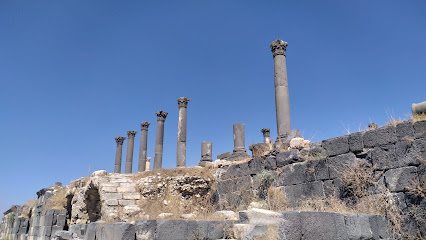
Yarmouk Nature Reserve
Discover the breathtaking beauty and rich biodiversity of Yarmouk Nature Reserve, a premier national park in Jordan perfect for nature lovers and outdoor adventurers.
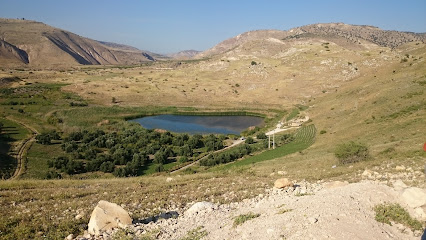
Archaeological Museum of Umm Qais.
Explore the Archaeological Museum of Umm Qais: A Journey Through Time in the Heart of Jordan's Ancient History.
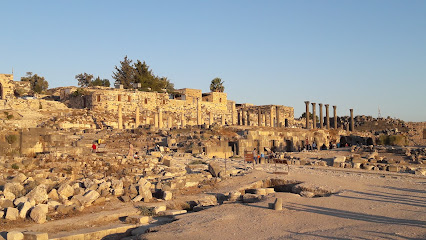
Umm Qais Rest House
Experience authentic Jordanian cuisine with breathtaking views at Umm Qais Rest House, where history and flavor meet in a serene setting.
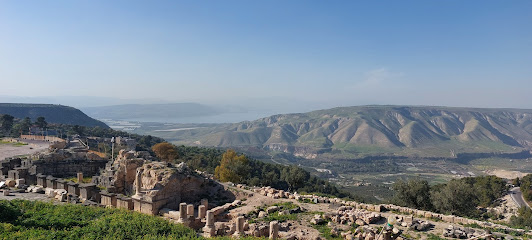
Al Arayes Lake
Experience the tranquility and natural beauty of Al Arayes Lake, a hidden gem for hiking enthusiasts and nature lovers in Al-Himmah Al-Ordonyah, Jordan.
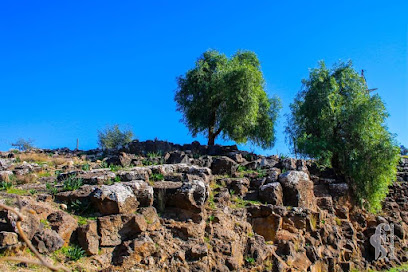
Yarmouk Forest Reserve Visitor Center
Explore the Yarmouk Forest Reserve Visitor Center, your gateway to Jordan's breathtaking wilderness and rich biodiversity.
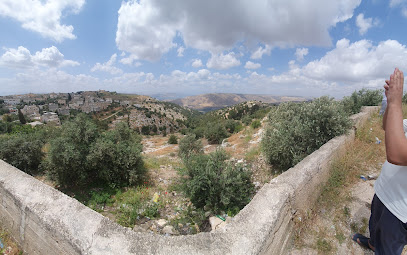
rubue Jadara restaurant
Experience the rich flavors of Jordan at Rubue Jadara, a restaurant offering breathtaking views and authentic local cuisine in Umm Qais.
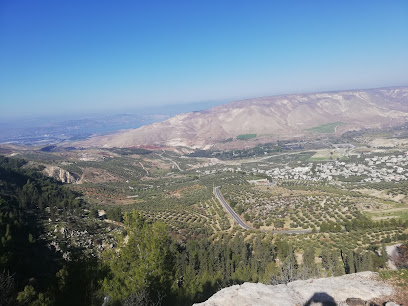
West Theatre
Explore the ancient West Theatre in Umm Qais, a Roman marvel with stunning views and rich historical significance in northern Jordan.
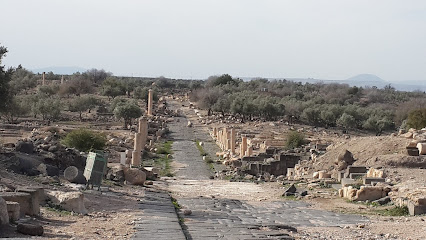
Roman Vaulted Shops
Explore the Roman Vaulted Shops in Umm Qais, a historical landmark embodying the architectural brilliance and cultural heritage of ancient Jordan.
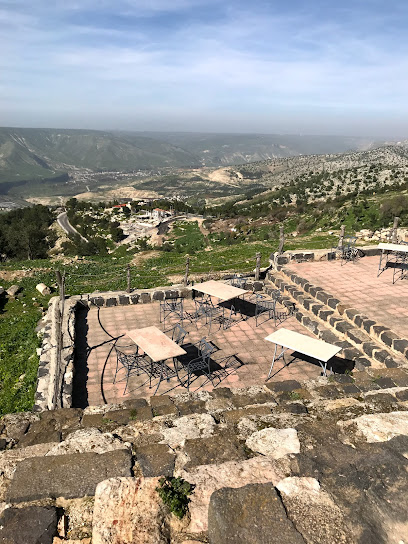
Roman theatre
Discover the stunning Roman Theatre in Umm Qais, a historical landmark offering breathtaking views and a glimpse into ancient civilization.
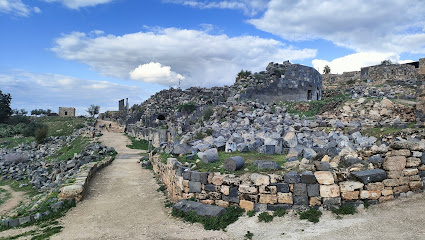
Gadara Aqueduct
Explore the Gadara Aqueduct, an ancient Roman engineering marvel in Jordan, offering stunning landscapes and a glimpse into historical ingenuity.
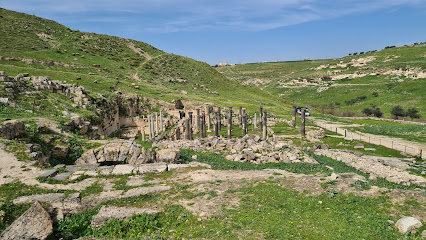
Gadara Aqueduct (water tunnel under umm qais)
Discover the Gadara Aqueduct, a stunning ancient water tunnel that showcases Roman engineering amidst breathtaking views in Umm Qais.
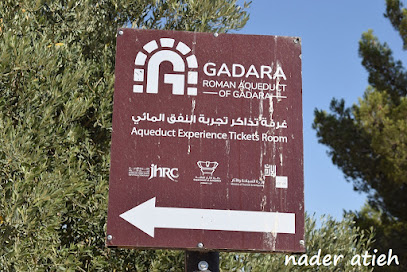
Central plaza
Discover the historical allure of Central Plaza in Umm Qais, a captivating site rich in Roman heritage and breathtaking views.

Gadara Cycling
Experience the thrill of cycling through ancient ruins and stunning landscapes at Gadara Cycling in Umm Qais, Jordan.
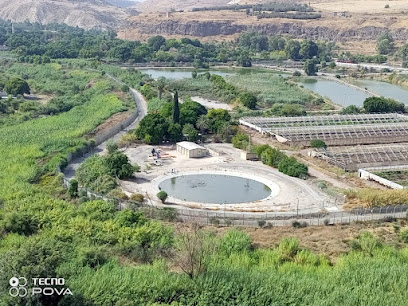
الكنيسة البيزنطية
Explore the Byzantine Church of Umm Qais, a historical gem with stunning architecture and panoramic views of ancient landscapes.

Unmissable attractions to see
Archaeological Site of Jerash
Step into the ancient past and explore Jerash, one of the best-preserved Roman cities, where history and breathtaking architecture await.
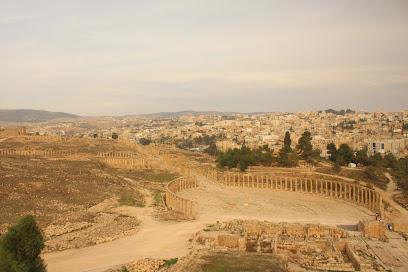
Yardenit
Experience spiritual tranquility at Yardenit, a significant baptismal site on the Jordan River, rich in Christian history and natural beauty.
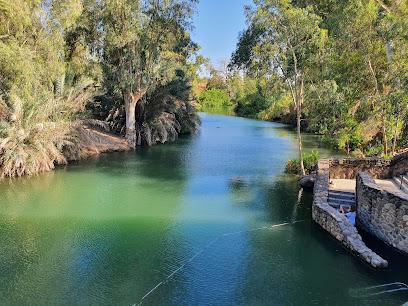
Church of the Annunciation
Explore the Church of the Annunciation in Nazareth, a historic and spiritual landmark that embodies the essence of faith and beauty.

Ajloun Castle
Explore Ajloun Castle, a stunning historical site in Jordan with breathtaking views, rich heritage, and a glimpse into the medieval past.
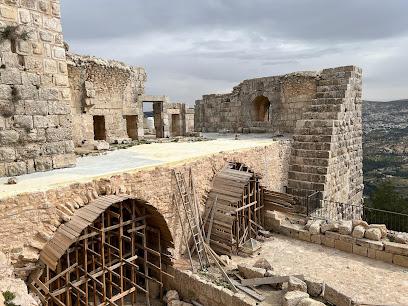
Tomb of Rabbi Meir
Explore the spiritual heart of Tiberias at the Tomb of Rabbi Meir, a significant pilgrimage site that blends rich history with serene landscapes.
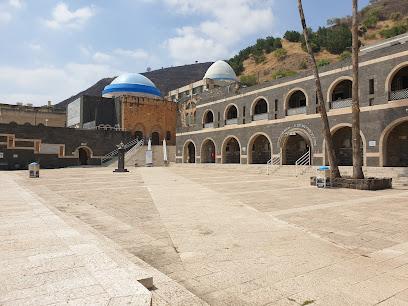
Beit She'an National Park
Explore Beit She'an National Park: A captivating blend of ancient ruins and stunning landscapes in northern Israel.
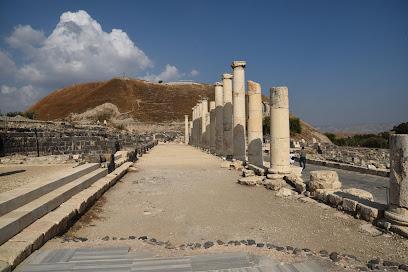
The Church of the Beatitudes
Explore the serene Church of the Beatitudes, a beautiful blend of spirituality and stunning views over the Sea of Galilee, a must-visit in Tiberias.
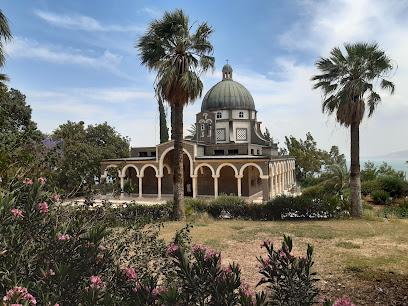
Hamat Tiberias National Park
Experience the natural beauty and historical richness of Hamat Tiberias National Park, a serene oasis by the Sea of Galilee.
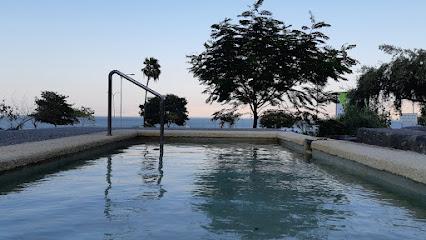
The Tomb Site of the Rambam
Explore the serene Tomb Site of the Rambam in Tiberias, a significant pilgrimage destination filled with rich Jewish heritage and tranquil beauty.
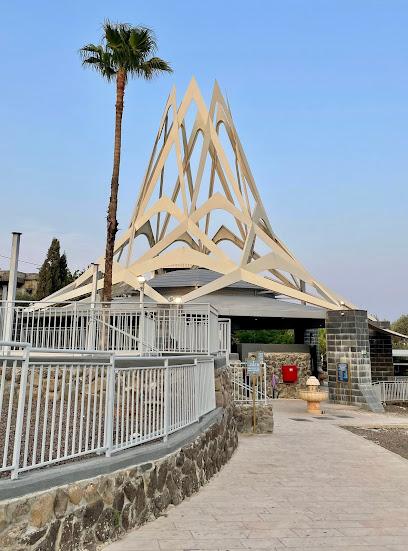
Cana Catholic Wedding Church
Explore the historic Cana Catholic Wedding Church in Kafr Kanna, a sacred site of spiritual significance and stunning architectural beauty.
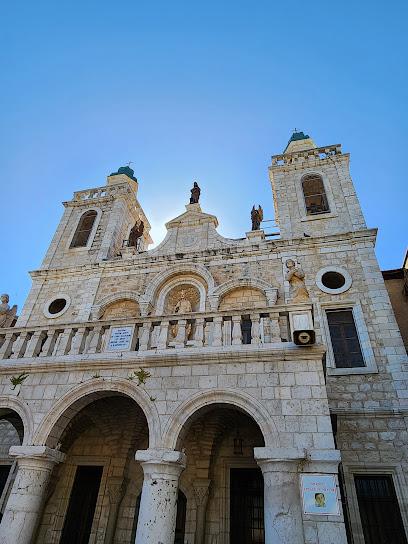
Hula Nature Reserve
Discover the enchanting beauty of Hula Nature Reserve, a premier destination for birdwatching and nature exploration in northern Israel.
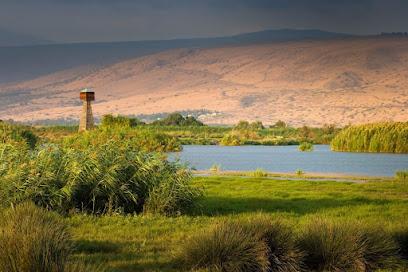
Gamla Nature Reserve
Explore the breathtaking landscapes and rich biodiversity of Gamla Nature Reserve, a national park that offers adventure and history in stunning Israel.
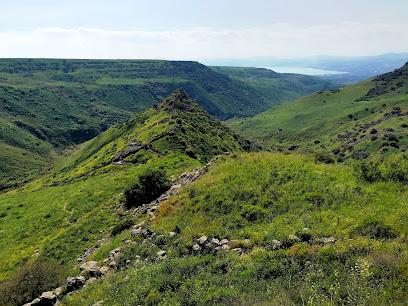
Churches of Tabgha
Discover the historical and spiritual heart of Tabgha, where ancient mosaics and serene landscapes create an unforgettable pilgrimage experience.
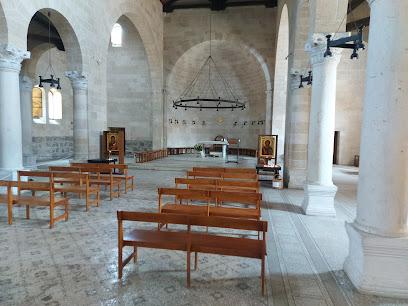
The Greek Orthodox Church of the Annunciation
Explore the Greek Orthodox Church of the Annunciation in Nazareth, a stunning blend of history, spirituality, and architectural beauty.
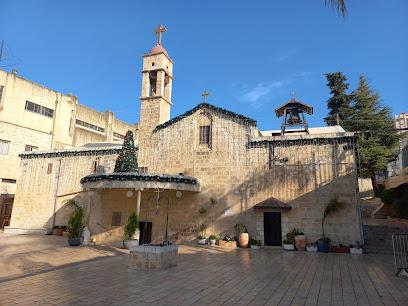
Yarmouk Nature Reserve
Explore the natural wonders of Yarmouk Nature Reserve, a sanctuary of biodiversity and breathtaking landscapes in Jordan.
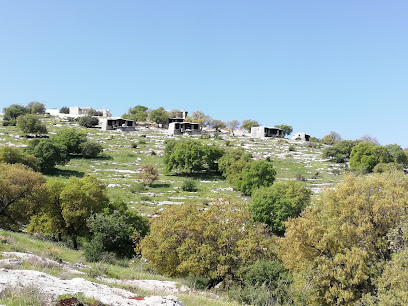
Essential places to dine
Tawaheen AlHawa
Experience authentic Jordanian flavors at Tawaheen AlHawa in Amman – where every meal is a celebration of culture and taste.
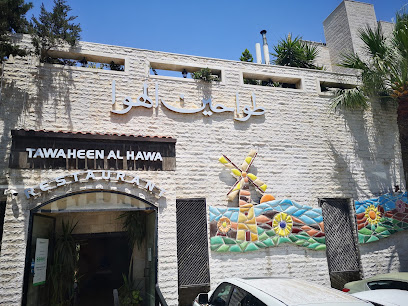
Reem AlBawadi Restaurant
Discover authentic Jordanian flavors at Reem AlBawadi Restaurant in Amman - where tradition meets culinary excellence.
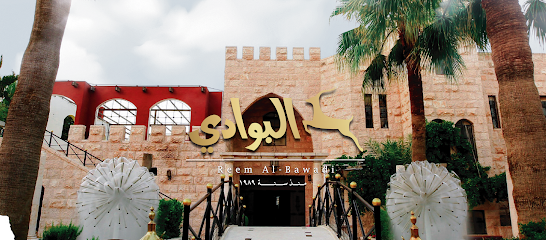
Sufra Restaurant
Discover authentic Middle Eastern flavors at Sufra Restaurant in Amman - where tradition meets taste in a family-friendly atmosphere.
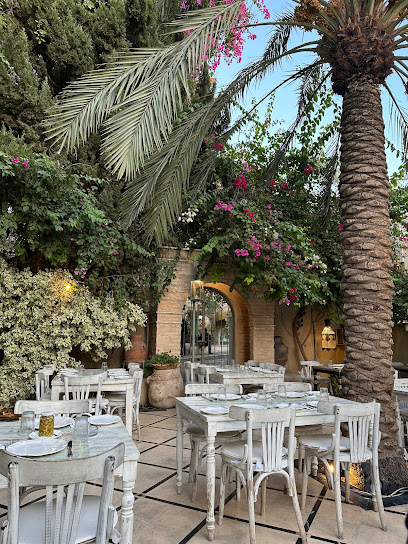
Lucca Steakhouse
Experience top-tier steaks at Lucca Steakhouse in Amman - where culinary excellence meets elegant dining.
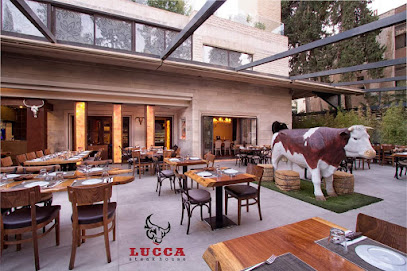
Romero Restaurant
Experience the essence of Italy at Romero Restaurant in Amman, where exquisite cuisine meets elegant dining.
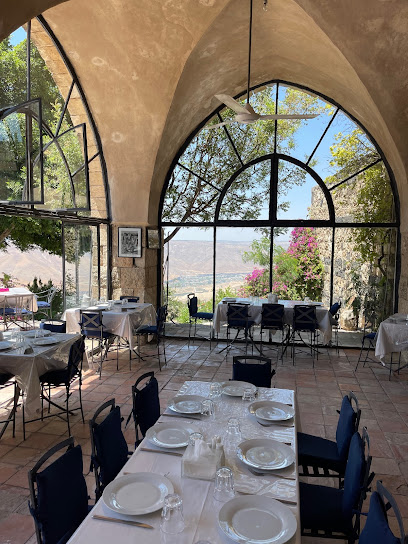
Bourj Al Hamam
Savor authentic Lebanese cuisine at Bourj Al Hamam in Amman – where tradition meets luxury dining.
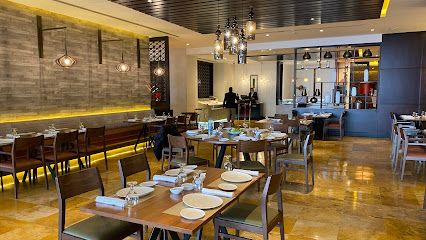
Siwar Al-Yasameen Restaurant مطعم سوار الياسمين
Discover the rich flavors of Middle Eastern cuisine at Siwar Al-Yasameen Restaurant in Amman - where tradition meets taste.

Fortuna Cafe
Experience authentic Jordanian flavors at Fortuna Cafe - where tradition meets modernity in every delicious bite.

Umm Qais Rest House
Experience delightful dining with stunning views at Umm Qais Rest House in Jordan – where history meets flavor amidst breathtaking landscapes.
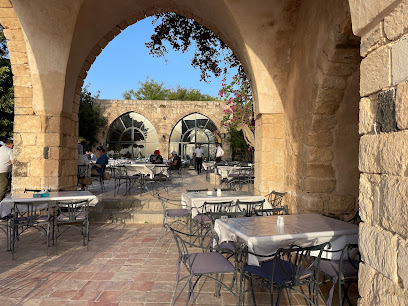
Cantaloupe Gastro Pub
Experience the vibrant flavors of Jordan at Cantaloupe Gastro Pub, where culinary creativity meets lively nightlife on Rainbow Street.
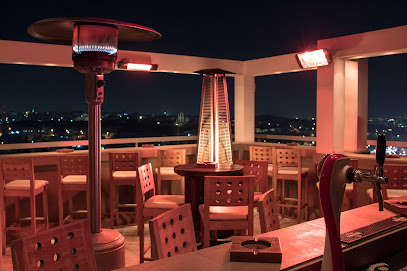
Forca International Cuisine
Experience global flavors at Forca International Cuisine in Amman—where every meal is an unforgettable culinary journey.
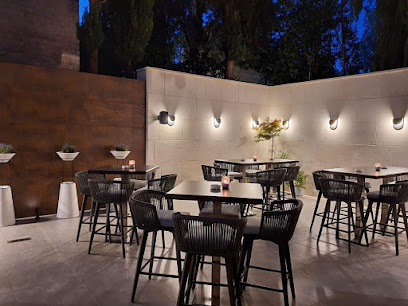
V Lounge & Restaurant
Indulge in exquisite steaks and refreshing cocktails at V Lounge & Restaurant, Amman's premier dining destination for unforgettable experiences.
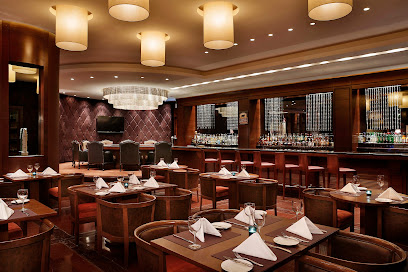
La Maison Verte Restaurant
Experience exquisite Jordanian cuisine fused with international flavors at La Maison Verte Restaurant in Amman.

Joury Restaurant
Experience authentic Jordanian flavors at Joury Restaurant in Amman - where culinary excellence meets warm hospitality.
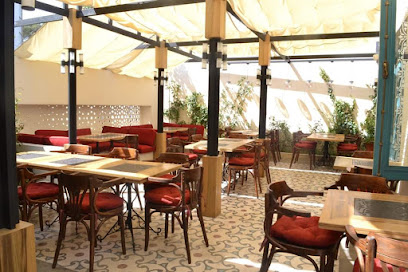
Just Hot Dog & burger
Discover Irbid's favorite spot for delicious hot dogs and burgers at Just Hot Dog & Burger - where every bite is packed with flavor!
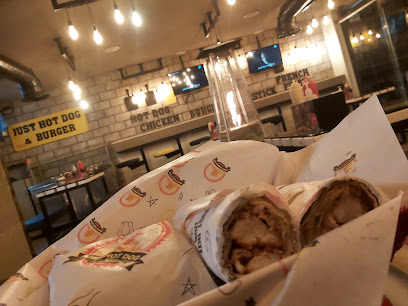
Markets, malls and hidden boutiques
Abdali Mall
Experience the vibrant shopping scene at Abdali Mall, Amman's ultimate destination for fashion, food, and family fun.
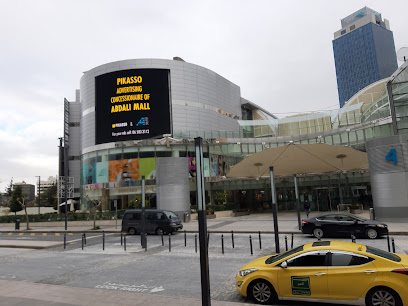
Mecca Mall
Discover the ultimate shopping and entertainment experience at Mecca Mall in Amman, where modernity meets tradition in a vibrant atmosphere.
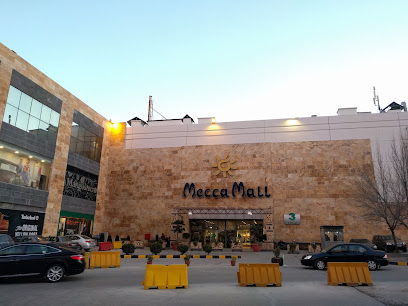
The Galleria Mall
Discover The Galleria Mall in Amman, where luxury shopping meets delightful dining and entertainment for a complete experience.

Umm Qays
Discover the ancient wonders of Umm Qays, a historical treasure in Jordan with stunning Roman ruins and breathtaking views of the Jordan Valley.
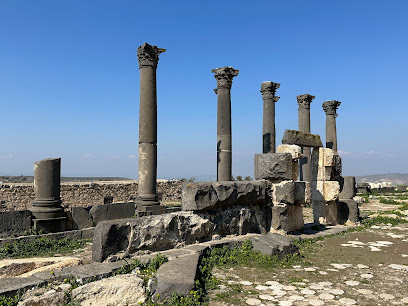
Archaeological Museum of Umm Qais.
Explore the Archaeological Museum of Umm Qais, where ancient history comes to life through stunning artifacts and breathtaking views of Jordan's landscape.

Darayseh Mall
Discover shopping bliss at Darayseh Mall in Irbid, where fashion, food, and fun come together for an unforgettable experience.
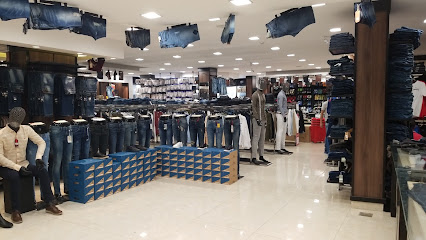
علي بيك الماركات العالمية - Ali Bey
Explore Ali Bey in Irbid for a stylish shopping experience featuring top international clothing brands and exceptional service.
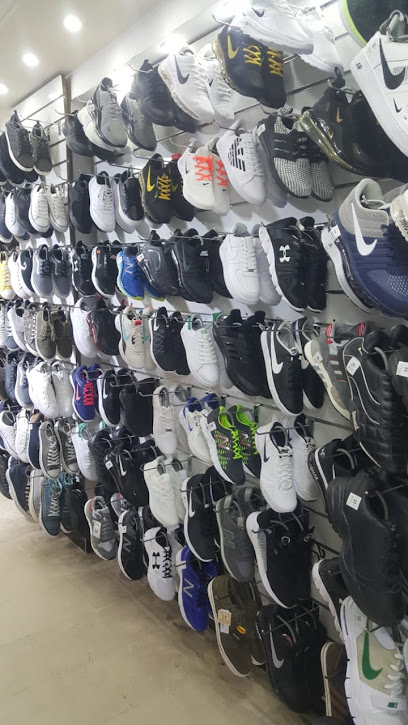
مؤسسة النور للألبسة الجاهزة
Discover the vibrant fashion scene at مؤسسة النور للألبسة الجاهزة in Irbid, where style meets affordability in a welcoming atmosphere.
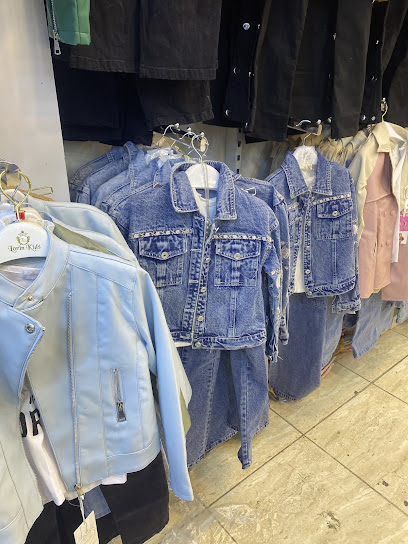
Kutkut Fashion
Discover the latest styles at Kutkut Fashion, Irbid's premier clothing store, where local trends meet vibrant culture for a unique shopping experience.
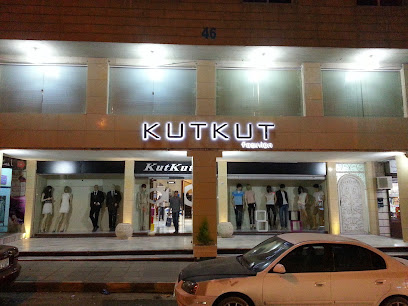
الوسطية سنتر
Experience shopping and dining like never before at الوسطية سنتر, the ultimate shopping destination in Jordan with diverse options for everyone.
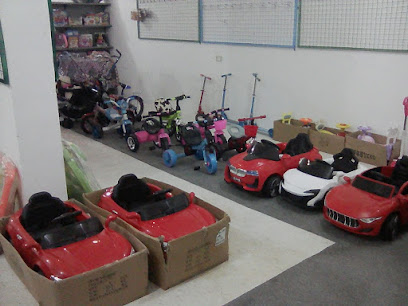
Gifts Center (Irbid City Center)
Discover unique gifts and authentic Jordanian souvenirs at Gifts Center in Irbid City Center, a vibrant shopping destination for tourists.
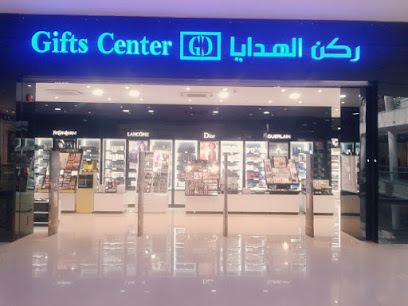
Souk Zara Souvenir and Handicraft shop
Explore Souk Zara for authentic Jordanian souvenirs and handicrafts in the heart of Amman, where culture meets craftsmanship.
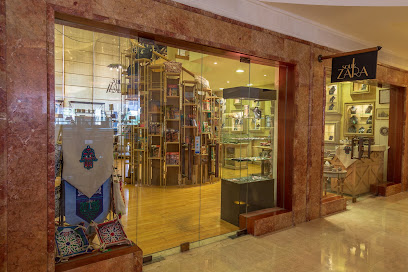
فيروز
Explore the vibrant gift shop فيروز in Irbid – a hub for unique Jordanian crafts and souvenirs reflecting the rich culture of the region.
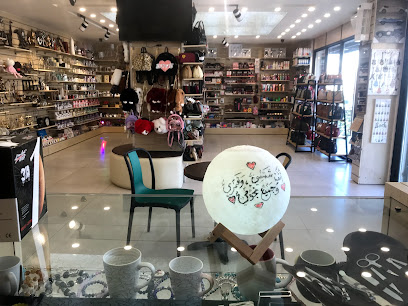
Good day coffee
Enjoy a delightful coffee experience at Good Day Coffee, surrounded by the natural beauty and historical wonders of Umm Qais.
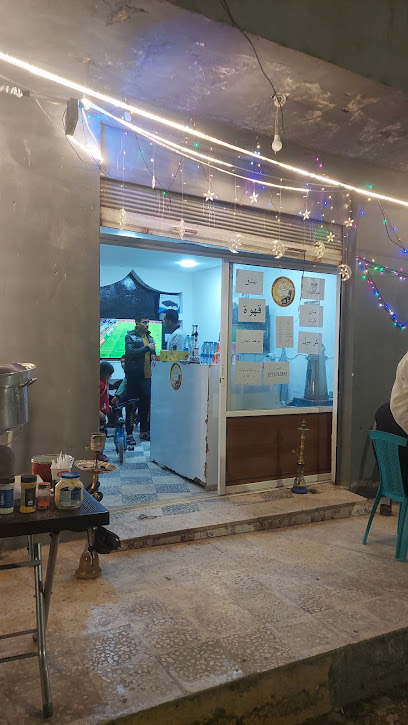
انا وامي
Explore أنا وامي in Irbid for a unique shopping experience showcasing traditional and modern Jordanian fashion.

Essential bars & hidden hideouts
Umm Qais Rest House
Experience authentic Jordanian cuisine at Umm Qais Rest House, where history meets breathtaking views in the heart of ancient ruins.
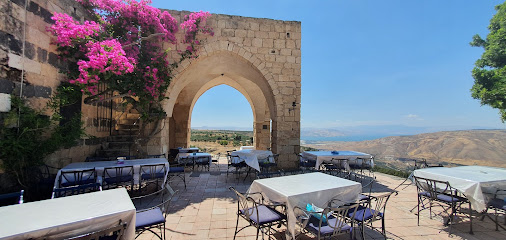
The Corner's Pub
Experience the vibrant nightlife and local flavors at The Corner's Pub in Amman, where friendly faces and great food await.
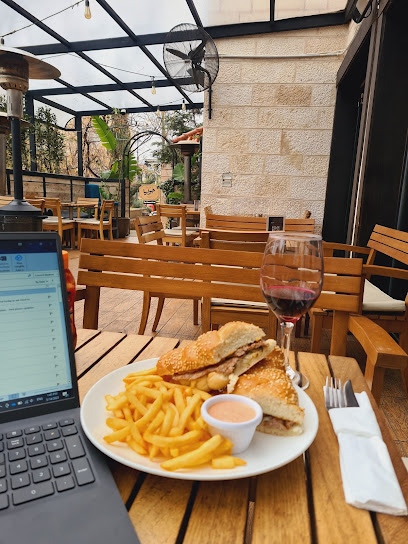
Good Pub
Experience the vibrant nightlife at Good Pub in Amman, where local culture meets great drinks and a friendly atmosphere.
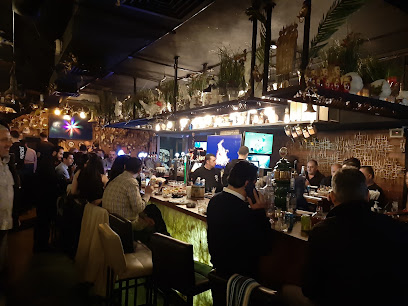
Murphy's - House of Rock
Experience the vibrant nightlife of Amman at Murphy's - House of Rock, where live music meets a welcoming atmosphere and delicious food.
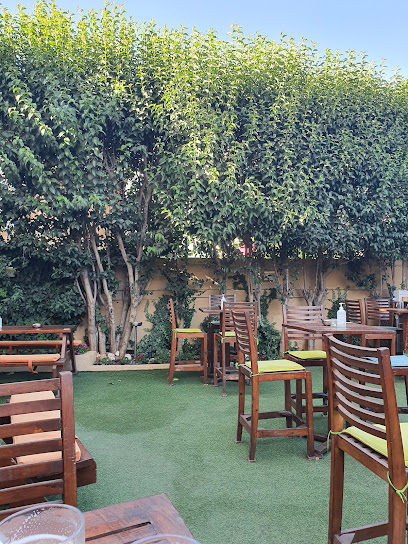
Houston's Restaurant And Pub
Experience the best of grilled cuisine at Houston's Restaurant and Pub in Al Abdali, Amman, where flavor meets a vibrant atmosphere.
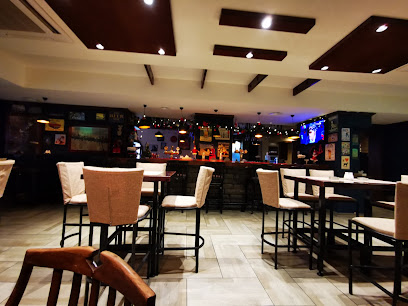
HQ Resto.Pub
Experience the lively ambiance and delicious offerings at HQ Resto.Pub, a must-visit bar and pub in the heart of Amman.
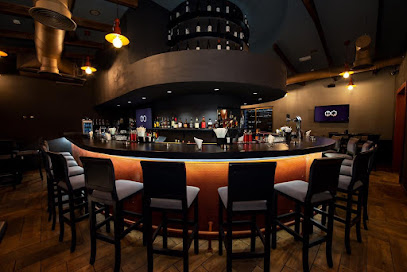
يمامة ام قيسYamama Umm Qais
Experience the authentic flavors of Jordan at Yamama Umm Qais, where stunning views meet exquisite local cuisine.
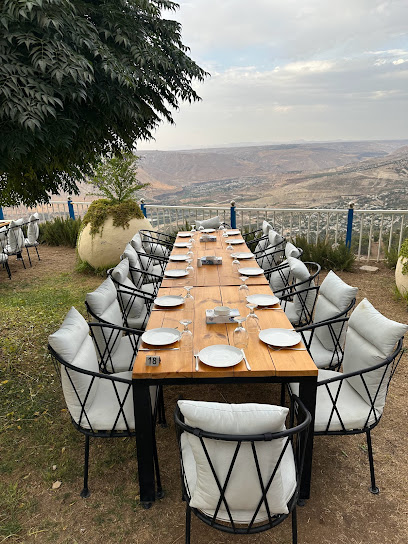
منتجع جدارا (استراحة الصويتي)
Experience the flavors of Jordan at منتجع جدارا (استراحة الصويتي), a dining gem with breathtaking views and authentic local cuisine.
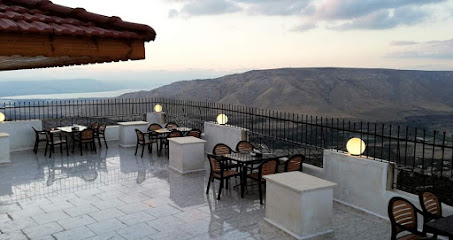
AL-Hara AL-Fouqa
Discover Al-Hara Al-Fouqa, a charming cafe in Umm Qais, offering delightful refreshments and stunning views of the Golan Heights.

Thabet Store
Experience the vibrant nightlife of Irbid at Thabet Store, a lively bar offering local flavors, great drinks, and a welcoming atmosphere.
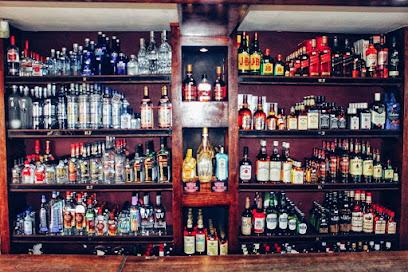
Jordan Wine House
Discover the essence of Jordanian hospitality at Jordan Wine House, where exquisite wines and delightful dishes create unforgettable moments.
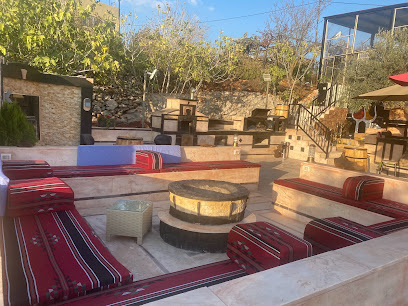
استراحه ومسابح اثينا الشرق
Discover the charm of Athenas East in Umm Qais, where delicious dining meets tranquil parks and refreshing pools for a perfect getaway.
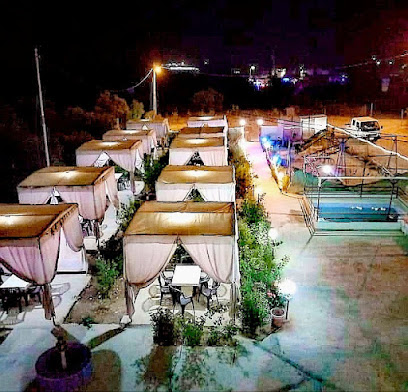
مسبح واستراحة أم قيس السياحية - Um Qais
Experience the tranquility of Um Qais, where exquisite Jordanian cuisine meets breathtaking views in a serene oasis.
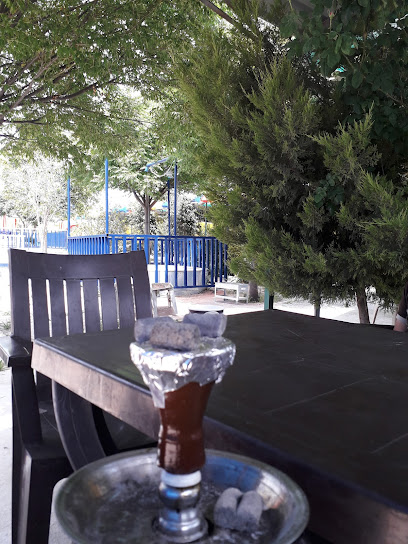
مقهى ومطعم ملتقى ام قيس
Experience the flavors of Jordan at Umm Qais Restaurant, where stunning views meet traditional cuisine in a welcoming atmosphere.
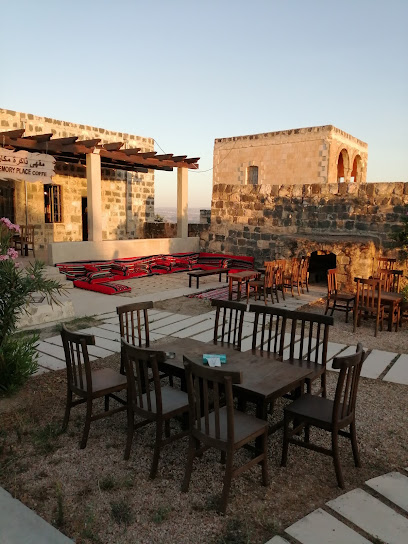
مطعم واستراحة ام قيس
Discover the culinary delights at مطعم واستراحة ام قيس, where stunning views meet authentic Jordanian flavors in Umm Qais.
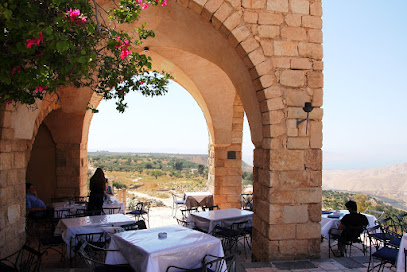
Local Phrases
-
- Helloمرحبا
[marhaba] - Goodbyeوداعا
[wadaa'an] - Yesنعم
[naam] - Noلا
[la] - Please/You're welcomeمن فضلك/على الرحب والسعة
[min fadlik/ala alrahb wasi'ah] - Thank youشكرا
[shukran] - Excuse me/Sorryعذرا
[udhran] - How are you?كيف حالك؟
[kayf halik?] - Fine. And you?بخير. وأنت؟
[bikhayr. wa'ant?] - Do you speak English?هل تتحدث الإنجليزية؟
[hal tatahadath al'iinjilizia?] - I don't understandلا أفهم
[la afham]
- Helloمرحبا
-
- I'd like to see the menu, pleaseأريد أن أرى القائمة، من فضلك
[uridu an ara alqaimah, min fadlik] - I don't eat meatأنا لا آكل اللحوم
[ana la aakul alluhum] - Cheers!صحتين!
[sahatin!] - I would like to pay, pleaseأريد أن أدفع، من فضلك
[uridu an adfa', min fadlik]
- I'd like to see the menu, pleaseأريد أن أرى القائمة، من فضلك
-
- Help!النجدة!
[alnajdah!] - Go away!انصرف!
[ansarif!] - Call the Police!اتصل بالشرطة!
[iatisil bialshurta!] - Call a doctor!اتصل بطبيب!
[iatisil batabib!] - I'm lostأنا ضائع
[ana daie] - I'm illأنا مريض
[ana mareed]
- Help!النجدة!
-
- I'd like to buy...أريد أن أشتري...
[uridu an ashtari...] - I'm just lookingأنا فقط أتطلع
[ana faqat atatlau] - How much is it?كم هو ثمنه؟
[kam huwa thamanuh?] - That's too expensiveهذا غالي جدا
[hatha ghali jiddan] - Can you lower the price?هل يمكنك تخفيض السعر؟
[hal yumkinuka takhfid alsu'ir?]
- I'd like to buy...أريد أن أشتري...
-
- What time is it?كم الساعة؟
[kam alsaa'ah?] - It's one o'clockالساعة الواحدة
[alsaa'ah alwahidah] - Half past (10)الساعة العاشرة والنصف
[alsaa'ah al'ashirah walnusf] - Morningالصباح
[alsaabah] - Afternoonالظهر
[aldhuhur] - Eveningالمساء
[almasa'] - Yesterdayأمس
[ams] - Todayاليوم
[alyawm] - Tomorrowغدا
[ghadan] - 1واحد
[wahed] - 2اثنان
[ithnan] - 3ثلاثة
[thalatha] - 4أربعة
[arba'ah] - 5خمسة
[khamsah] - 6ستة
[sittah] - 7سبعة
[sab'ah] - 8ثمانية
[thamania] - 9تسعة
[tis'ah] - 10عشرة
[asharah]
- What time is it?كم الساعة؟
-
- Where's a/the...?أين...
[ayna...] - What's the address?ما هو العنوان؟
[ma huwa al'ainan?] - Can you show me (on the map)?هل يمكنك أن تريني (على الخريطة)؟
[hal yumkinuka an tureeni (ala alkhareetah)?] - When's the next (bus)?متى يكون الحافلة التالية؟
[mata yakun alhafilah altaliyah?] - A ticket (to ....)تذكرة (إلى ....)
[tazkirah (ila ....)]
- Where's a/the...?أين...
History of Umm Qais
-
Umm Qais, known in ancient times as Gadara, was founded in the 3rd century BCE by the Greeks. It quickly became a prominent city in the Decapolis, a group of ten cities on the eastern frontier of the Roman Empire that had a high degree of autonomy. Gadara was renowned for its Hellenistic culture, schools of philosophy, and stunning architecture.
-
Under Roman rule, Gadara thrived as a cultural and intellectual hub. The city was adorned with grand theaters, colonnaded streets, and elaborate bathhouses. The Roman road system connected Gadara to other significant cities, facilitating trade and cultural exchange. The city's position on a strategic hilltop provided stunning views over the Sea of Galilee, contributing to its appeal.
-
During the Byzantine period, Gadara became a significant center for Christianity. Several churches were built, and the city continued to prosper. The Byzantine influence is evident in the remnants of beautiful mosaics and religious structures found throughout the site. The transition from a pagan to a predominantly Christian city marked a significant cultural shift.
-
With the advent of Islamic rule in the 7th century, Gadara, now known as Umm Qais, saw new architectural styles and cultural influences. The city continued to be inhabited, and its strategic location ensured it remained an important site. Islamic architecture, including mosques and fortifications, began to appear, blending with the existing Greco-Roman and Byzantine elements.
-
In the 19th century, Umm Qais was absorbed into the Ottoman Empire. The Ottomans built new structures and used the ancient ruins for their purposes. The modern village of Umm Qais began to develop around the ancient site, integrating historical remnants into contemporary life. Today, the site is a testament to the myriad cultures and empires that have left their mark on this historically rich city.
Umm Qais Essentials
-
Umm Qais is located in northern Jordan, close to the borders with Israel and Syria. The nearest airport is Queen Alia International Airport in Amman, approximately 110 kilometers away. From Amman, you can rent a car or take a taxi to Umm Qais, which typically takes around 2 hours by road. Alternatively, there are buses and shared minibuses (service taxis) from Amman's North Bus Station to Irbid, and from Irbid, you can take a taxi to Umm Qais.
-
Within Umm Qais, the best way to explore is on foot, especially the archaeological site and the local village. For visiting surrounding areas, taxis are available and can be hired for a few hours or the whole day. Public buses and minibuses connect Umm Qais to nearby towns like Irbid and Ajloun. Renting a car is also a convenient option if you plan to explore northern Jordan extensively.
-
The official currency in Jordan is the Jordanian Dinar (JOD). Credit cards are accepted in larger hotels and some restaurants, but it is advisable to carry cash, especially for smaller establishments and local markets. There are a few ATMs in Umm Qais, but it's wise to withdraw sufficient cash beforehand, either in Amman or Irbid.
-
Umm Qais is generally a safe destination for tourists. However, like any travel destination, it is advisable to take standard precautions. Avoid walking alone at night in secluded areas and keep an eye on your belongings in crowded places. Petty crimes like pickpocketing are rare but can occur, especially in busy tourist spots. Always be aware of your surroundings.
-
In case of emergency, dial 911 for immediate assistance. There are local police and medical facilities in Umm Qais. For serious medical issues, Irbid has larger hospitals. It's recommended to have travel insurance that covers medical emergencies. For minor health issues, there are pharmacies in the village where you can purchase over-the-counter medications.
-
Fashion: Do dress modestly, especially when visiting religious sites. Avoid wearing revealing clothing. Religion: Do respect local customs and traditions. Remove your shoes when entering mosques. Public Transport: Do be respectful and offer your seat to elderly passengers. Don't eat or drink on public transport. Greetings: Do greet people with a handshake or a nod. Use the right hand for handshakes and giving or receiving items. Eating & Drinking: Do try local delicacies and accept food offerings graciously. Don't refuse hospitality, as it is considered impolite.
-
To experience Umm Qais like a local, visit the local souq (market) where you can buy fresh produce and traditional Jordanian goods. Engage with locals, as they are often friendly and willing to share stories about the village's history and culture. Try the local cuisine, including dishes like mansaf and maqluba. Don't miss the sunset view from the ancient ruins, offering breathtaking views of the Sea of Galilee and the Golan Heights.
Trending Landmark in Umm Qais
-
Umm Qays
-
Yarmouk Nature Reserve
-
Archaeological Museum of Umm Qais.
-
Umm Qais Rest House
-
Al Arayes Lake
-
Yarmouk Forest Reserve Visitor Center
-
rubue Jadara restaurant
-
West Theatre
-
Roman Vaulted Shops
-
Roman theatre
-
Gadara Aqueduct
-
Gadara Aqueduct (water tunnel under umm qais)
-
Central plaza
-
Gadara Cycling
-
الكنيسة البيزنطية
Nearby Cities to Umm Qais
-
Things To Do in Irbid
-
Things To Do in Tiberias
-
Things To Do in Beit She'an
-
Things To Do in Nazareth
-
Things To Do in Safed
-
Things To Do in Jerash
-
Things To Do in Mafraq
-
Things To Do in Akko
-
Things To Do in Acre
-
Things To Do in Haifa
-
Things To Do in Nahariya
-
Things To Do in Salt
-
Things To Do in Zikhron Ya'akov
-
Things To Do in Rosh HaNikra
-
Things To Do in Caesarea








